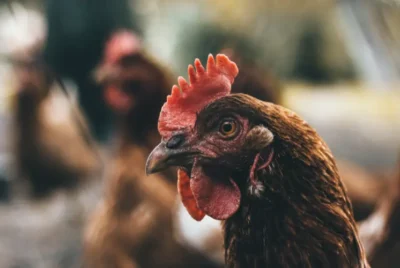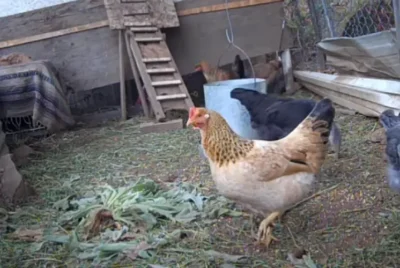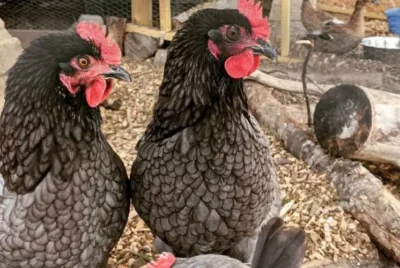Breed Profile: California Tan Chicken
Raising California Tan chickens on our farm has its ups and downs. These chickens are great at laying eggs, but they need special care when it comes to their food, living space, and health. Making sure they lay plenty of eggs while keeping them happy and healthy can be tricky. It’s a lot of work, but seeing these chickens thrive and produce eggs makes it all worth it.
So, let’s explore the egg production capabilities and other facts about this breed to help you make an informed decision.
Table of Contents
- What is a California Tan Chicken?
- Egg Production of A California Tan Chicken
- Characteristics and Behavior
- Appearance
- Weight and Body Structure
- Breed Standard
- Health Issues
- Feeding California Tans
- Coop Setup for California Tan Chickens
- Pros and Cons of Raising California Tan
- Difference Between California Tan Chicken and California White Chicken
- Choose the Perfect Breed With Chicken Raising 101
What is a California Tan Chicken?
The California Tan chicken is a special mix of two types of chickens: the White Leghorn and the Rhode Island Red. They were mixed to lay lots of eggs. While Rhode Island Reds lay about 270 eggs a year and White Leghorns up to 280, California Tans can lay around 300 big brown eggs every year. This makes them very popular for people who want lots of eggs, whether they have a big farm or just a few chickens at home. Plus, they’re tough and can do well in different kinds of weather, so you can raise them almost anywhere.
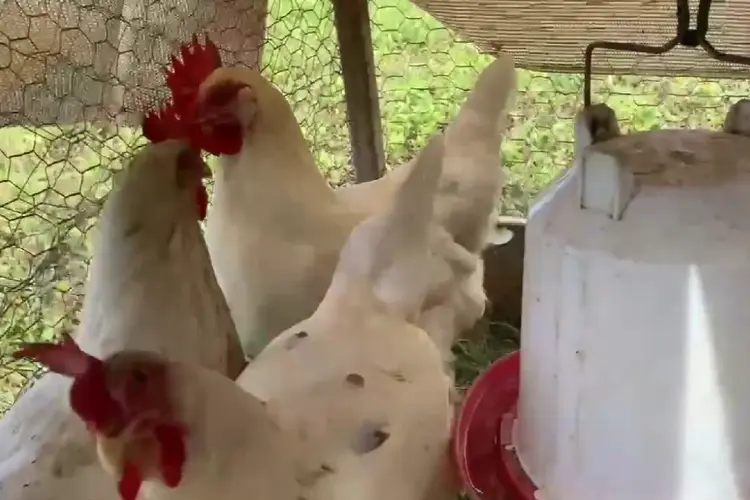
Egg Production of A California Tan Chicken
California Tan chickens are great egg layers, like their parent breeds, the Production Red and White Leghorns. They are liked by both home chicken keepers and commercial farms because they lay lots of eggs.
If you’re after a chicken breed that gives you many eggs for home use or selling, California Tans is a good pick. Even with a small flock in your backyard, you’ll get plenty of eggs to eat and share.
California Tan hens start laying eggs at about 17 weeks old. Their eggs begin small but grow larger as the chicken grows. The eggs have thick shells, and their quality is similar to that of Rhode Island Red and White Leghorn chickens.
Each year, a California Tan hen can lay around 300 eggs, up to about 700 in her lifetime. The eggs are large and can be brown, light brown, tinted, or tan. Each week, these hens can lay 5-6 eggs, and some might even lay 2 eggs a day. But they’re not the best for meat because they’re not very big.
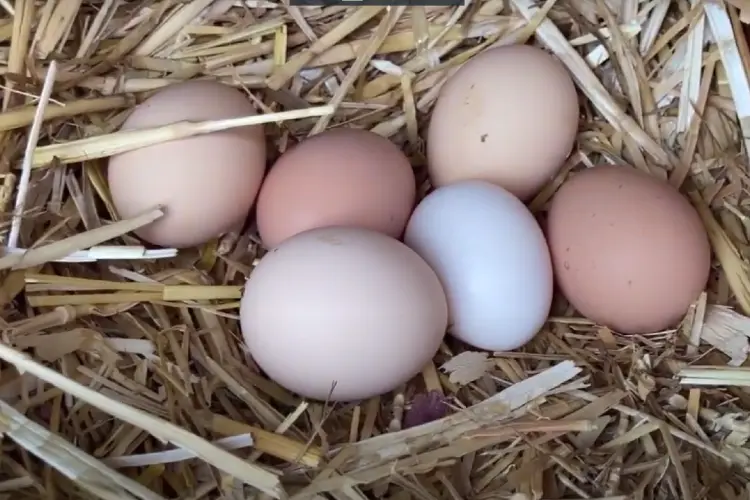
Characteristics and Behavior
California Tan chicken breeds are friendly, calm birds that get along well with others in a backyard flock. However, they can be picked on by more aggressive birds, so they should only be kept with other calm breeds.
They’re active, love to search for food, and can fly well. If you let them roam freely, you’ll need a good fence. They like being in groups and following a strict pecking order. To keep peace in the group, it’s good to have one rooster for every ten hens. Like most roosters, the California Tan rooster can be a bit feisty and will protect the flock from threats.
Appearance
Contrasting its name, the California Tan chicken predominantly sports white plumage, albeit with some unique variations. Its feathers often have a brownish texture, with occasional chickens featuring black flecks or a reddish tint. Despite these color variations, there’s little difference in plumage between roosters and hens. Both sexes display a single-type, pinkish-red comb and wattle.
Weight and Body Structure
While the plumage may be similar between sexes, body structure offers clear differentiation. California Tan hens, typically leaner, weigh around four pounds and exhibit short tail feathers that point backward.
In contrast, roosters have a more muscular build with broader chests, weighing around six pounds, and their tail feathers point upward. Neither sex has feathered feet, and some individuals have a dark-colored upper beak.
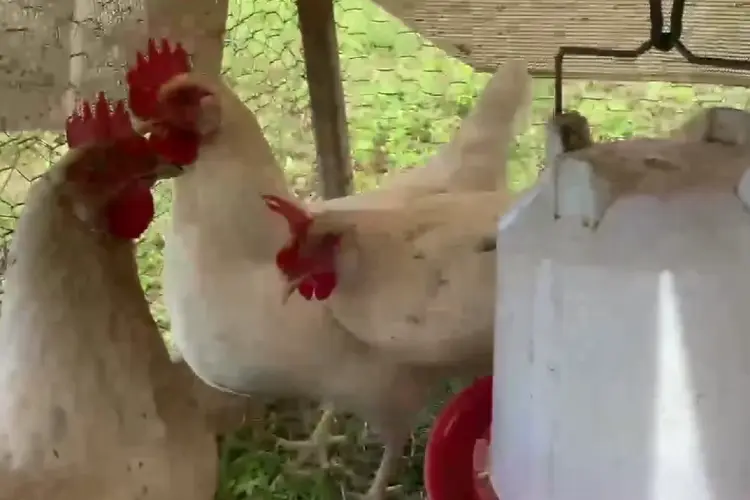
Breed Standard
As a hybrid breed, the California Tan is not recognized as a standard breed. Its medium-sized, lean body is perfectly adapted for high egg production, with energy primarily channeled into laying eggs.
California Tan is not the best to breed them. This is because they are a hybrid breed. If you want more California Tan chickens, you must breed a Production Red chicken with a White Leghorn chicken. If you breed two California Tans together, the chicks will be a different breed.
Health Issues
California Tan chickens are generally healthy and don’t have any inherited health problems. They’re tough chickens and can handle both hot and cold weather well.
While they don’t usually have health problems, they sometimes get common chicken diseases. For example, they might get parasites like mites and lice, so it’s important to check your chickens regularly and treat them if needed.
But most brown egg layers or chickens that lay many eggs can sometimes have problems with their egg-laying systems. They could also have problems with egg-binding, which can happen if they don’t get enough care. Some hens might also have a prolapsed vent, especially if overweight.
But, these issues can often be solved by making sure the hens don’t have any vitamin shortages, infections, or parasites. So, it’s important to take good care of your chickens’ health.
Feeding California Tans
This breed doesn’t eat much, making them a good choice for first-time chicken owners or people who can’t afford much chicken feed.
Since they’re good at finding their food, you can let them search for insects and bugs in your yard. Once fully grown, you should give them a feed that’s 16% protein. When they’re molting, you can increase their protein to 20% to help them.
Also, you should give your chickens grit and oyster shell in separate containers. The oyster shell gives your hens the calcium they need to make strong eggshells.
Coop Setup for California Tan Chickens
These chickens are small, so they don’t need a lot of room in their coop. But they are active chickens, so they need space to move around. Each chicken should have about 4 square feet of coop space.
Each chicken should also have about 8 inches of roosting space. This gives them enough room to spread out in the summer and snuggle up in the winter.
The nesting boxes should be about 12×12 inches. This is small enough to stop them from sharing a box but big enough for them to move around.
If you keep them in a coop all the time, they’ll need a chicken run to stay active. You can keep them busy by giving them different things to explore, like piles of leaves, perches at different heights, and tree stumps.

Pros and Cons of Raising California Tan
Pros
- California Tan chickens give a lot of eggs. They can give about 300 eggs in a year. This is great if you want to sell or use eggs at home.
- These chickens can live well in both hot and cold weather. Some call them “winter wonders” because they do well in cold weather.
- Not only do these chickens give a lot of eggs, but the eggs are also big. This is good if you want to sell the eggs or use them for cooking.
- They are not hard to raise. They like to find their food but are also happy in a chicken pen. They are calm chickens and can get along well with other breeds.
Cons
- If you want to raise chickens for meat production, California Tan chickens might not be the best choice. These chickens are thin and do not give a lot of meat.
- They do not often go broody. This means they do not often sit on their eggs to hatch them. This could be a problem if you want to breed these chickens.
Difference Between California Tan Chicken and California White Chicken
California Tan chickens and California White chickens can look similar, but they are different. They both come from mixed parent breeds.
California White chickens come from California Grays and White Leghorns. California Tan comes from Production Reds and White Leghorns.
The color of their feathers is different. California White chickens have white feathers. California Tans have red feathers, and sometimes they have black or brown spots.
They lay different colored eggs, too. California Tans lay brown eggs. California White chickens lay white eggs. But, besides these differences, California Tan and California White chickens are very similar.
Choose the Perfect Breed With Chicken Raising 101
The California Tan chicken breed is a perfect choice for both backyard and commercial farming, given its high egg production, friendly nature, and resilience. Although not ideal for meat, their impressive laying capabilities and easy management make them an attractive breed for anyone interested in poultry farming.
Proper care and attention to their unique needs ensure a productive, healthy flock. All in all, these birds offer great value and satisfaction in chicken raising.



